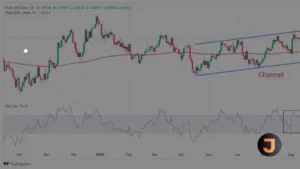Red Sea Disruption Impacts Container Shipping Traffic
In recent developments, the container shipping industry is facing significant challenges as traffic through the Red Sea experiences disruptions. Maersk, a leading shipping group, has reported on Monday that these disruptions are anticipated to lead to a reduction in industry capacity by an estimated 15-20 percent for the second quarter on routes between the Far East and Europe.
Shipping companies, including Maersk, have been compelled to reroute their vessels via the longer route around Africa’s Cape of Good Hope since December. This decision comes as a response to avoid potential attacks by Iran-aligned Houthi militants operating in the Red Sea. The extended voyage times have had a direct impact, causing freight rates to surge.
Maersk’s updated advisory to customers highlighted the growing concerns: “The risk zone has expanded, and attacks are reaching further offshore.” The company emphasized the resultant need for vessels to extend their journeys even more, which inevitably leads to increased time and costs for transporting cargo to its intended destination.
The Danish shipping giant, often seen as an indicator of global trade health, has indicated that the shipping disruptions stemming from the situation in the Red Sea are likely to persist until at least the end of the year. Such disturbances have led to logistical complications including port bottlenecks and vessel bunching—scenarios where multiple ships arrive simultaneously, creating congestion and delays.
To combat these challenges and improve service reliability, Maersk has taken proactive measures. “We are doing what we can to boost reliability, including sailing faster and adding capacity,” the company stated. In a tangible effort to address equipment and capacity shortages, Maersk has leased over 125,000 additional containers and has increased capacity in alignment with customer demand.
As the industry navigates through these turbulent waters, Maersk’s efforts to mitigate the effects of the






